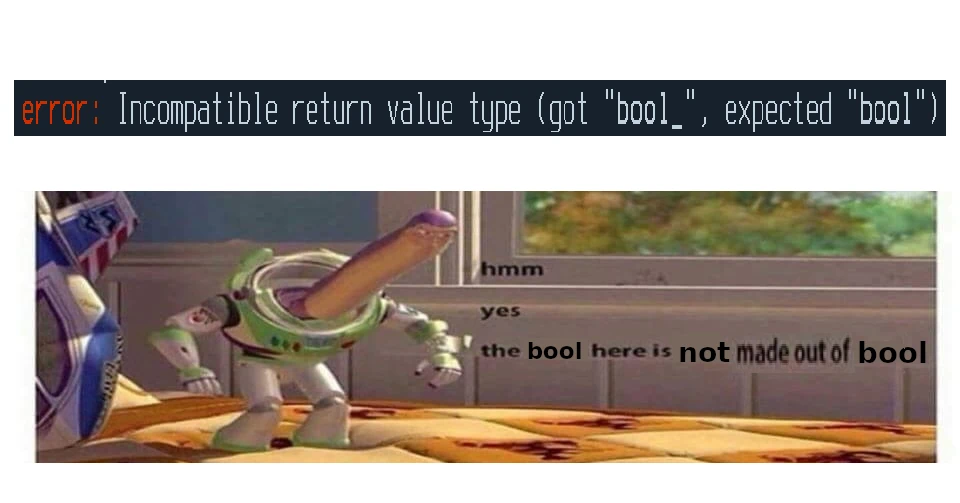this post was submitted on 14 May 2024
312 points (91.3% liked)
Programmer Humor
35148 readers
289 users here now
Post funny things about programming here! (Or just rant about your favourite programming language.)
Rules:
- Posts must be relevant to programming, programmers, or computer science.
- No NSFW content.
- Jokes must be in good taste. No hate speech, bigotry, etc.
founded 5 years ago
MODERATORS
you are viewing a single comment's thread
view the rest of the comments
view the rest of the comments

The JS thing makes perfect sense though,
"1" is a string. You declared its type by using quotes.
myString = "1"in a dynamically typed language is identical to writingstring myString = "1"in a statically typed language. You declare it in the symbols used to write it instead of having to manually write outstringevery single time.2 is an integer. You know this because you used neither quotes nor a decimal place surrounding it. This is also explicit.
"1" + 2, if your interpreter is working correctly, should do the followingidentify the operands from left to right, including their types.
note that the very first operand in the list is a
stringtype as you explicitly declared it as such by putting it in quotes.cast the following operands to
stringif they are not already.use the string addition method to add operands together (in this case, this means concatenation).
In the example you provided,
"1" + 2is equivalent to"1" + "2", but you're making the interpreter do more work.QED:
"1" + 2should, in fact,=== "12", and your lack of ability to handle a language where you declare types by symbols rather than spending extra effort writing the type out as a full english word is your own shortcoming. Learn to declare and handle types in dynamic languages better, don't blame your own misgivings on the language.Signed, a software engineer.
TypeError is also a correct response, though, and I think many folks would say makes more sense. Is an unnecessary footgun